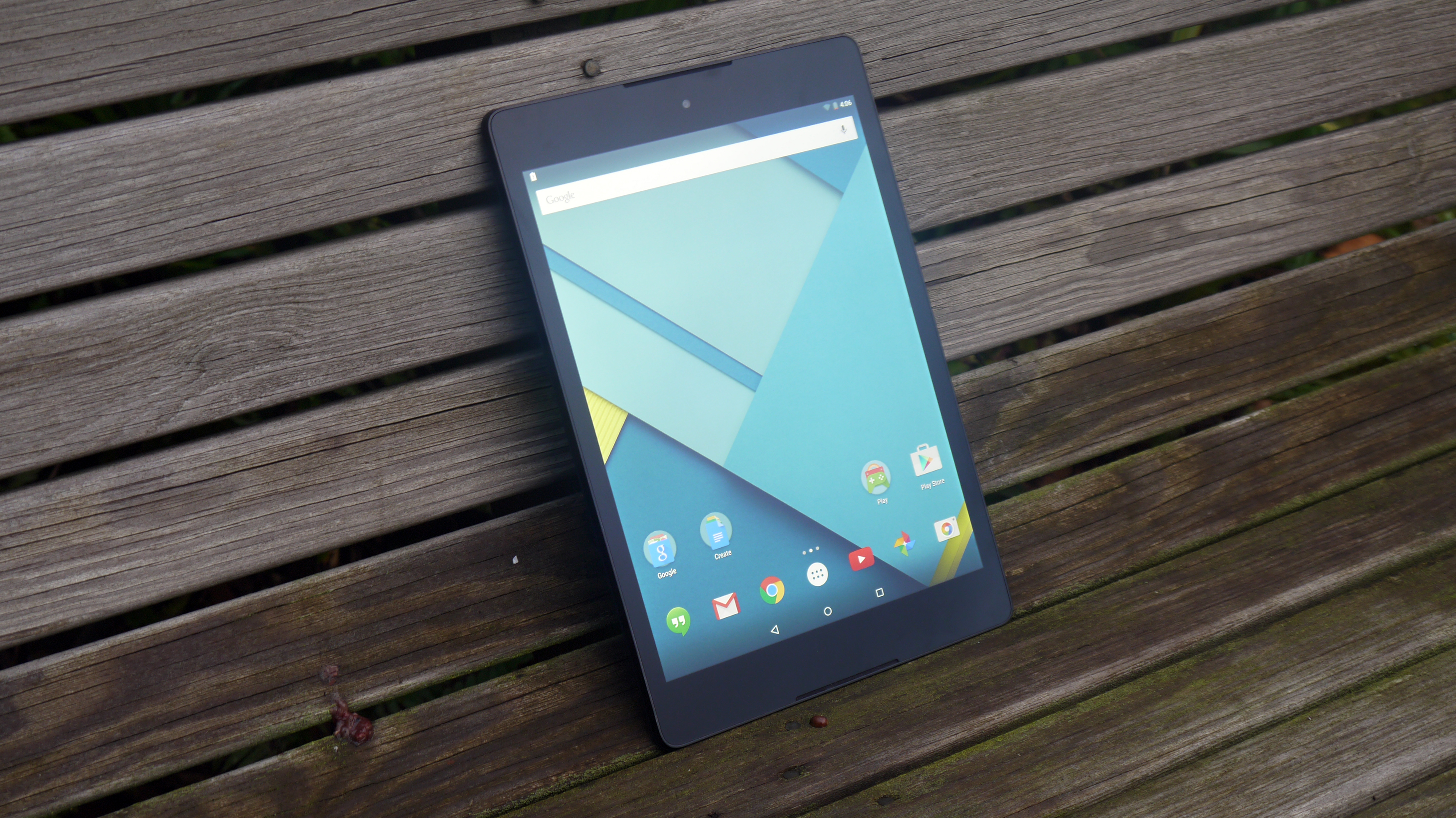TechRadar Verdict
Google Nexus 9 is an 8.9-inch upgrade to last year's Nexus 7 and a great introduction to Android Lollipop. It just doesn't measure up to the iPad Air 2 in more ways than one.
Pros
- +
Ideal 4:3 aspect ratio
- +
Android 5.0 Lollipop
- +
Knock-to-wake feature
- +
Strong speakers
Cons
- -
Pricier than before
- -
Subpar display quality
- -
Uninspiring design
- -
No micro SD slot
Why you can trust TechRadar
You can still find the Nexus 9 tablet on sale today on eBay in the US for next to nothing compared to its original launch price. Don't look for it through official channels like via Google and HTC; they have pout this Android tablet out to pasture.
Launching with Lollipop, it matured nicely to Marshmallow during its time on store shelves. But even though it's no longer for sale on Google's store, don't count it out just yet. Android 7.0 Nougat could end up on the Nexus 9 soon.
Original review follows below.
Google's Nexus 9 is the Goldilocks of pure Android tablets and, for the most part, designer HTC succeeds at making a device that's "just right" next to anything but an iPad.
It's not as big as the seriously outdated Samsung-made Nexus 10 and not as small as the ASUS-crafted Nexus 7. It's the silver bullet tablet entry that costs a little more of your hard-earned gold.
There's a specs bump behind the 8.9-inch display to help justify the launch price of $399 (£319, AU$479) for the space-limited Wi-Fi-only 16GB model, though I prescribe the 32GB Wi-Fi-only option with more internal storage.

When it comes to the new specs, I'm talking about the latest Nvidia 64-bit processor, a decent 2GB of RAM, dual front-facing speakers and a decent battery to keep it all up and running for a little over nine hours.
Even with those internal specs, Nexus 9 has a hard time measuring up to the iPad Air 2 in almost every category. Its own Android competition includes the Samsung Tab S, which flanks Google's 9-inch option with 10.5- and 8.4-inch sizes, and the sleek Sony Z3 Tablet Compact.
Price and updates
The entry-level Nexus 9 cost $399 (£319, AU$479) when it first came out, but discounts at Amazon make it slightly cheaper at $383 in the US, and PC World has it for £299 in the UK.
However, it's still worth paying for the 32GB Wi-Fi model for the extra space since there's no microSD slot. It's $479 (£399, AU$589), while the 32GB LTE variant is $599 (£459, AU$719).
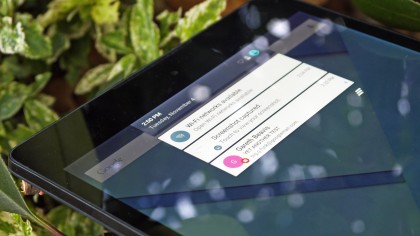
In the UK, mobile network O2 has started offering the Nexus 9 with a range of contracts. The lowest monthly price gives you a Nexus 9 for just £40 upfront, and then £25 a month for two years with a 500MB 4G data allowance. The tablet is also available for no upfront cost. The cheapest contract with no upfront cost is £29 a month for two years, and gives you 1GB of 4G data each month.
Nexus 9 became the first Android 5.0 device when it launched in late 2014, and it spearheaded Android 5.1.1 when the update launched in March. It brought back the silent mode that Lollipop axed. But more importantly, the new operating system makes the tablet more stable than it was eight months ago.
And in 2015, the Nexus 9 received the Android Marshmallow update that brought along permissions, improvements made to the battery, and more. Who knows, maybe it will receive the upgrade to Nougat, too?
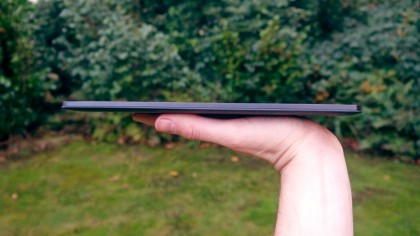
Design
It's about time HTC engineered a Nexus tablet or any modern-day tablet for that matter. After all, the crafty designers at the company brought us the polished-looking HTC One M9.
No surprise, the Nexus 9 includes a metallic frame around the perimeter of this larger device. It's nice as long as you don't expect that all-metal design to continue around back.
This year's tablet sticks with a soft, rubberized back cover – the same one that's adorned by the smaller Nexus 7. It's not an all-metal HTC One M8 equivalent, but it is easier to grip.
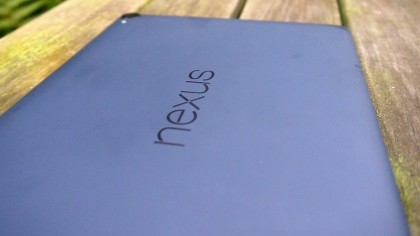
And grip matters here. The Nexus 9 weighs in at a 0.94 pound (425g), which isn't heavy, but a tablet with an 8.9-inch display should theoretically be a lot lighter than the 9.7-inch iPad. Yet Apple's device weighs almost as much: 0.96 pound (437g).
It does suck up fingerprint grease like nothing else, and accidentally lay it on some cooking fat in the kitchen and that sheen might never come off.
The weight and size gap between it and the 0.64 lbs (290g) Nexus 7 is also fairly pronounced. Nexus 9 measures out to be 8.99 in. (228mm) tall, 6.05 in. (154mm) wide, with a 0.31 in. (7.95mm) depth, which is thicker than both the new iPad and Nexus 7.
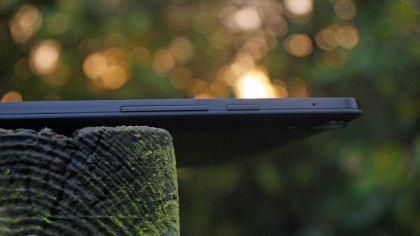
I would have liked to see better buttons on the Nexus 9 rim. Having tested the Nexus 6 and the new Moto X before that, I've come to appreciate the power button accented with ridges that don't feel so cheap.
That was a smart Motorola design choice that helped me differentiate between the tiny volume rocker and even tinier power button in the dark.
Thankfully, it's not always imperative to find that itty-bitty power button when the tablet is lying flat on a desk. A new "double tap to wake" feature conveniently wakes the Nexus 9 screen. HTC One M8 has the same knock-twice-to-wake perk, but it's even more useful on this larger, weightier device.
No more awkwardly clutching the rim to press the tiny power button.
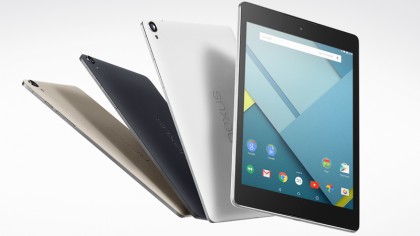
Nexus 9's trio of colors include a premium-looking off-white called lunar white, the tan-colored sand and a fingerprint-attracting matte black, dubbed indigo black. All look and feel resilient enough to adventurously go without a cover.
The only thing I feel as though I need to protect against is lodging dust in the speakers slots. There are two dust-collecting traps at the top and bottom of the tablet that also happen to contain powerful front-facing speakers.
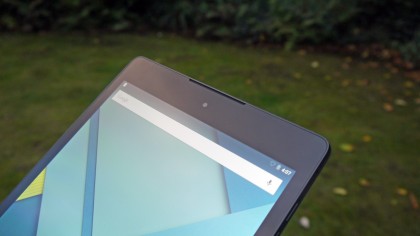
The speakers slots don't have me worried, though. It's the lack of a micro SD card slot that is the biggest design omission. There's no expandable storage whatsoever, meaning the 16GB model is going to be a tough sell if you use even a little bit of non-streaming multimedia.
I've actually come to expect this on many Android tablets (although usually the mid-range ones), so once again, the extra cost of the 32GB model is the only way to safeguard yourself from larger apps or big HD movie libraries.
